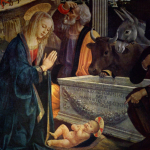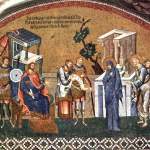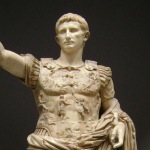Rejecting the Swoon Theory: 9 Reasons Why Jesus Did Not Just Faint on the Cross
by Dr. Peter Kreeft
Filed under The Resurrection
NOTE: Christians around the world celebrated Good Friday and Easter last week, which commemorate the death and resurrection of Jesus Christ. Thus we began a six-part series on these events by Dr. Peter Kreeft in which he examines each of the plausible theories attempting to explain what happened to Jesus at the end of his life, particularly whether he rose from the dead.
Part 1 - 5 Possible Theories that Explain the Resurrection of Jesus
Part 2 - Rejecting the Swoon Theory: 9 Reasons Why Jesus Did Not Faint on the Cross
Part 3 - Debunking the Conspiracy Theory: 7 Arguments Why Jesus’ Disciples Did Not Lie
Part 4 - Refuting the Myth Theory: 6 Reasons Why the Resurrection Accounts are True
Part 5 - Real Visions: 13 Reasons the Disciples Did Not Hallucinate
Part 6 - (Coming soon!)
Last week, we introduced five possible theories attempting to explain the resurrection accounts of Jesus of Nazareth. Today we'll examine what's often called the "swoon theory," which suggests that Jesus never really died on the cross—he simply fainted, or swooned, and was presumed dead.
Nine pieces of evidence refute the swoon theory:
(1) Jesus could not have survived crucifixion. Roman procedures were very careful to eliminate that possibility. Roman law even laid the death penalty on any soldier who let a capital prisoner escape in any way, including bungling a crucifixion. It was never done.
(2) The fact that the Roman soldier did not break Jesus' legs, as he did to the other two crucified criminals (Jn 19:31-33), means that the soldier was sure Jesus was dead. Breaking the legs hastened the death so that the corpse could be taken down before the sabbath (v. 31).
(3) John, an eyewitness, certified that he saw blood and water come from Jesus' pierced heart (Jn 19:34-35). This shows that Jesus' lungs had collapsed and he had died of asphyxiation. Any medical expert can vouch for this.
(4) The body was totally encased in winding sheets and entombed (Jn 19:38-42).
(5) The post-resurrection appearances convinced the disciples, even "doubting Thomas," that Jesus was gloriously alive (Jn 20:19-29). It is psychologically impossible for the disciples to have been so transformed and confident if Jesus had merely struggled out of a swoon, badly in need of a doctor. A half-dead, staggering sick man who has just had a narrow escape is not worshiped fearlessly as divine lord and conquerer of death.
(6) How were the Roman guards at the tomb overpowered by a swooning corpse? Or by unarmed disciples? And if the disciples did it, they knowingly lied when they wrote the Gospels, and we are into the conspiracy theory, which we will refute shortly.
(7) How could a swooning half-dead man have moved the great stone at the door of the tomb? Who moved the stone if not an angel? No one has ever answered that question. Neither the Jews nor the Romans would move it, for it was in both their interests to keep the tomb sealed: the Jews had the stone put there in the first place, and the Roman guards would be killed if they let the body "escape."
The story the Jewish authorities spread, that the guards fell asleep and the disciples stole the body (Mt 28:11-15), is unbelievable. Roman guards would not fall asleep on a job like that; if they did, they would lose their lives. And even if they did fall asleep, the crowd and the effort and the noise it would have taken to move an enormous boulder would have wakened them. Furthermore, we are again into the conspiracy theory, with all its unanswerable difficulties (we'll deal with this theory in a couple days.)
(8) If Jesus awoke from a swoon, where did he go? Think this through: you have a living body to deal with now, not a dead one. Why did it disappear? There is absolutely no data, not even any false, fantastic, imagined data, about Jesus' life after his crucifixion, in any sources, friend or foe, at any time, early or late. A man like that, with a past like that, would have left traces.
(9) Most simply, the swoon theory necessarily turns into the conspiracy theory or the hallucination theory, for the disciples testified that Jesus did not swoon but really died and really rose.
It may seem that these nine arguments have violated our initial principle about not presupposing the truth of the Gospel texts, since we have argued from data in the texts. But the swoon theory does not challenge the truths in the texts which we refer to as data; it uses them and explains them (by swoon rather than resurrection). Thus we use them too.
On Wednesday, we'll deal with the slightly more popular "conspiracy theory" alternative.
Related Posts
Note: Our goal is to cultivate serious and respectful dialogue. While it's OK to disagree—even encouraged!—any snarky, offensive, or off-topic comments will be deleted. Before commenting please read the Commenting Rules and Tips. If you're having trouble commenting, read the Commenting Instructions.













